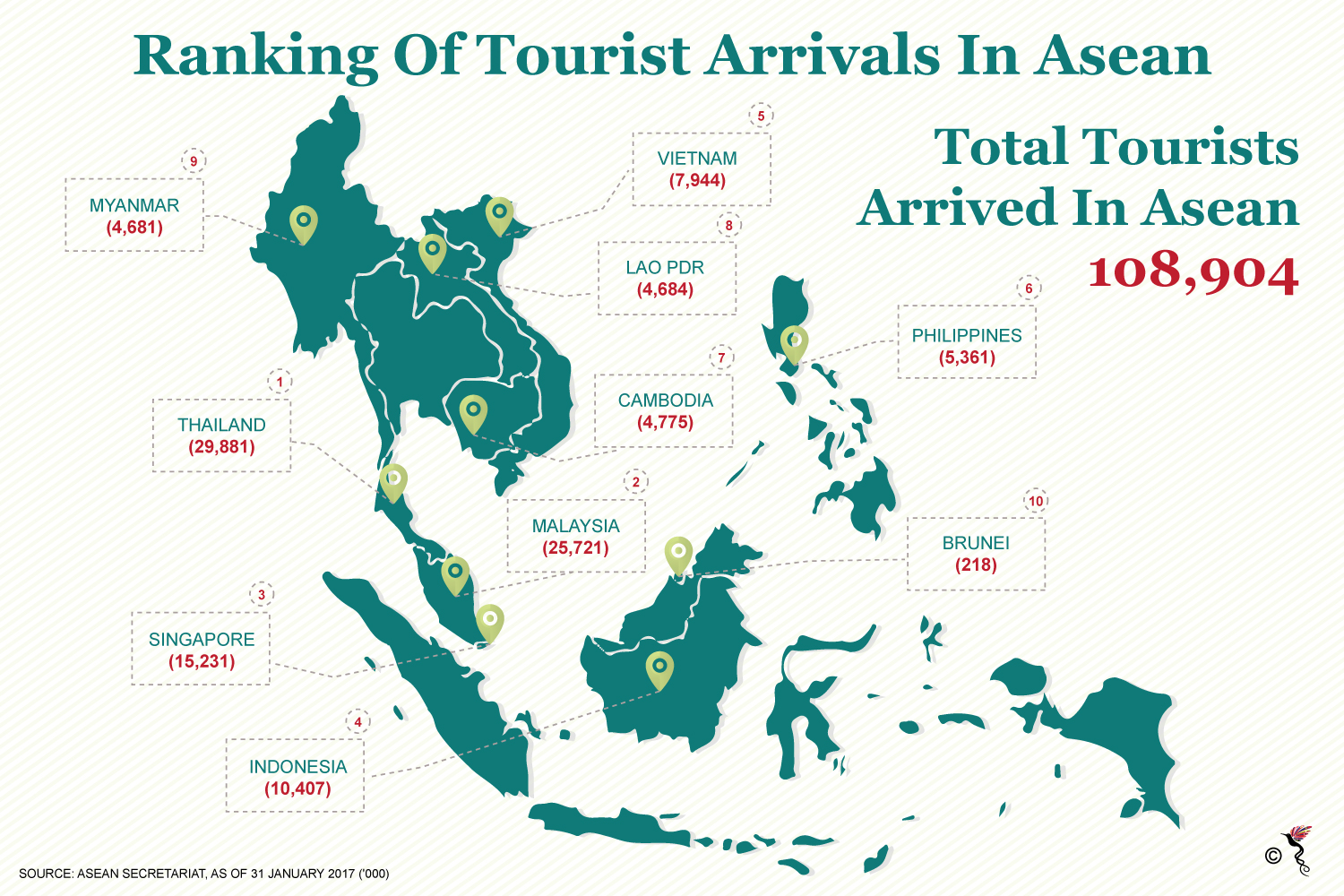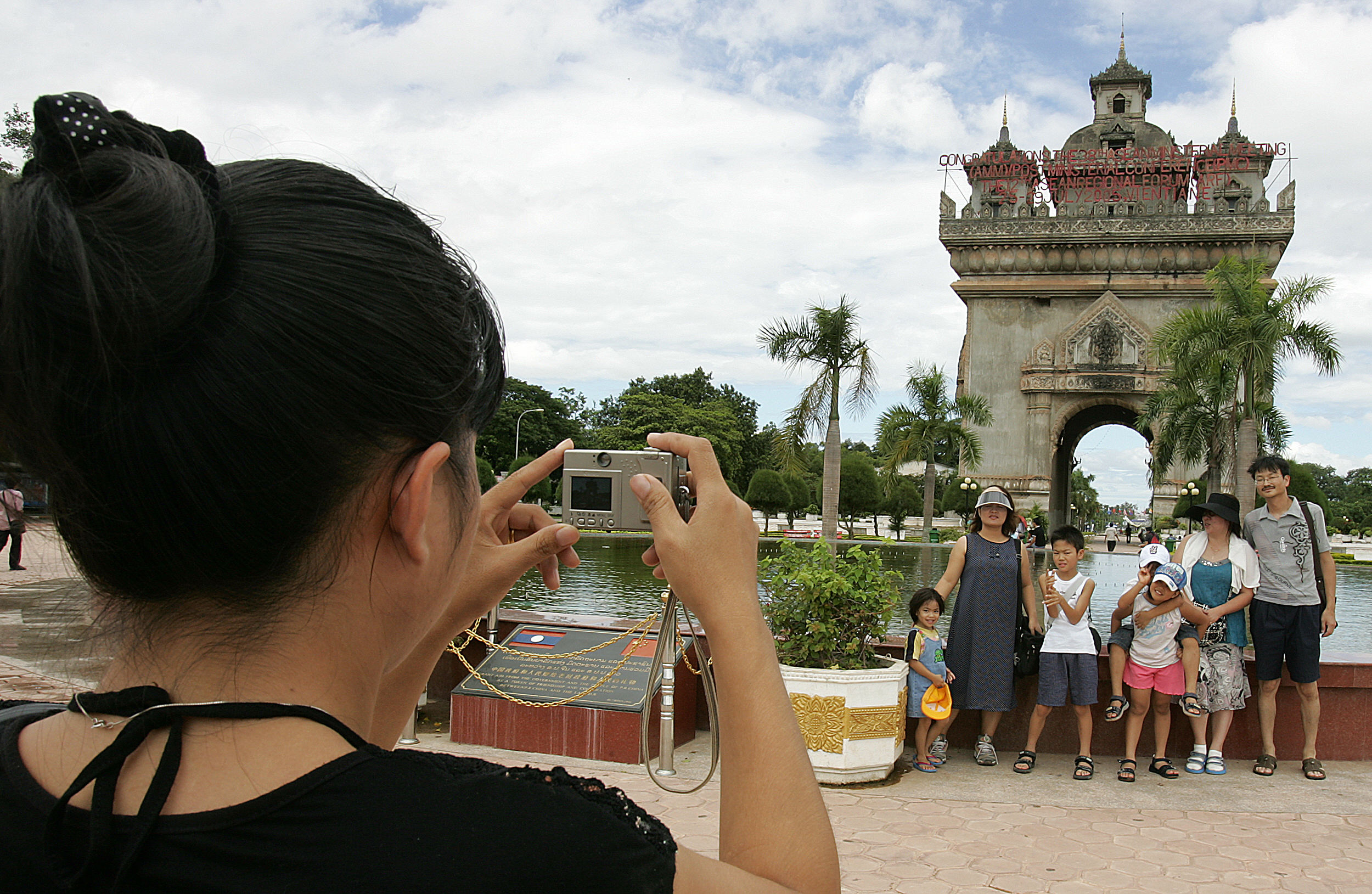The ASEAN region continues to remain an attractive tourist destination for both inter-regional and intra-regional (international) tourists as it welcomed a total of 108.9 million tourists in 2016.
ASEAN is rich in its' culture, heritage sites, diverse landscapes and marine attractions. The region also possess a pleasant mixture of traditional and modern lifestyle and architecture. Each country in ASEAN has its own uniqueness and the people here are known for their warmth and hospitality. All these reasons add up to why ASEAN countries continue to attract more tourists and travellers each passing year.
According to the data collected from ASEAN Secretariat, Thailand was ranked No.1 in terms of the most visited ASEAN travel destination last year. As per MasterCard's Asia Pacific Destinations Index 2017, the top cities visited in Thailand includes Bangkok, Phuket and Pattaya. On the other hand, Brunei scored the least in the ranking among all other ASEAN countries.

Thailand ranks first in number of tourist arrivals in ASEAN
Although a famous travel destination for tourists from all over the world, ASEAN still struggles with crucial challenges in providing quality tourism to all.
ASEAN's tourism challenges
Connectivity and infrastructure are the primary challenges for ASEAN tourism. That's why ASEAN leaders have established the ASEAN Tourism Strategic Plan 2016-2025.
As highlighted in the strategic plan, the eight core challenges faced by ASEAN in sustaining the development of quality tourism and integration among ASEAN members include:
-
To create a balance in benefits-distribution among ASEAN members
-
To reduce concerns over safety and security
-
To make cross-border formalities more convenient and less costly
-
To reduce transportation and destination infrastructure congestion
-
To reduce the high cost of travel industry services
-
To increase participation by local communities in the tourism value chain
-
To reduce the vulnerability of heritage assets and related populations to climate change
-
To develop destinations that are inclusive, green and knowledge-based
These challenges remain a barrier to the ASEAN community in developing a high-quality and comprehensive tourism in the region. However, this is just the tip of the iceberg. There are more underlying issues and challenges that the ASEAN regional community needs to address in order to effectively remove or reduce the core challenges. According to the strategic plan, the five underlying cause to these problems are:
-
Weakness in policies related to investment in tourist facilities and services, persistence of restrictive policies on cross border travel and connectivity, insufficient resources for enforcing destination safety and security, and weak communications infrastructure and systems
-
Lack of clearly defined policies for the development of inclusive, green and knowledge based sub-regional thematic destinations and products
-
Lack of prioritisation of tourism in public infrastructure investment especially air and ground transportation infrastructure, tourism destination infrastructure and ICT infrastructure
-
Weakness in policy frameworks for mainstreaming sustainable tourism development principles and practices, community participation, climate change adaption and resilience, and protecting natural and cultural heritage through enhanced site management and controls
-
Lack of a well-defined results framework and related monitoring and evaluation system
ASEAN strives to address tourism challenges
The ASEAN Economic Community (AEC)'s 2025 vision aims for ASEAN “to be a quality tourism destination offering a unique, diverse ASEAN experience, and will be committed to responsible, sustainable, inclusive and balanced tourism development, so as to contribute significantly to the socioeconomic well-being of ASEAN people”.
In light of these challenges and its 2025 aim, the AEC is fervently working on two strategies:
-
Enhance competitiveness of ASEAN as a single tourism destination
-
Intensify the promotion and marketing of ASEAN through its Southeast Asia campaign as a Single Destination
-
Diversify ASEAN tourism products
-
Attract tourism-related investments
-
Raise capacity and capability of tourism human capital
-
Implement and expand standards for facilities, services and destinations
-
Improve and expand connectivity and destination infrastructure
-
Enhance travel facilitation
2. Achieve a more sustainable and inclusive pattern of ASEAN tourism
-
Mainstream local community and public-private sector participation
-
Ensure safety and security, prioritising protection and maintenance of natural and cultural heritage
-
Increase responsiveness to environmental protection and climate change
Besides these said measures, the ASEAN is also looking at various other initiatives including the:
-
Implementation of the ASEAN Mutual Recognition Arrangement on Tourism Professionals (MRA-TP)
-
Adopting new and innovative approaches to destination, product development and marketing
-
Running various tourism initiatives such as the Greater Mekong Sub-region (GMS), the Brunei, Indonesia, Malaysia and Philippine East ASEAN Growth Area (BIMP-EAGA) and the Indonesia, Malaysia and Thailand Growth Triangle (IMT-GT)
-
Working with other agencies on key connectivity, investment, safety and security and natural and cultural heritage conservation
Teamwork is crucial in shaping the tourism sector
It is important that ASEAN cooperates as a region (to attain a common aim) in strengthening regional and international connectivity as well as developing high-quality infrastructure (both physical amenities and tourism-related systems).
By proactively addressing these challenges, ASEAN will become more competitive, sustainable, and socio-economically inclusive – subsequently achieving integrated tourism destination. When ASEAN is able to provide a better tourism experience for all, it will definitely draw more tourists to come to this part of the world.
